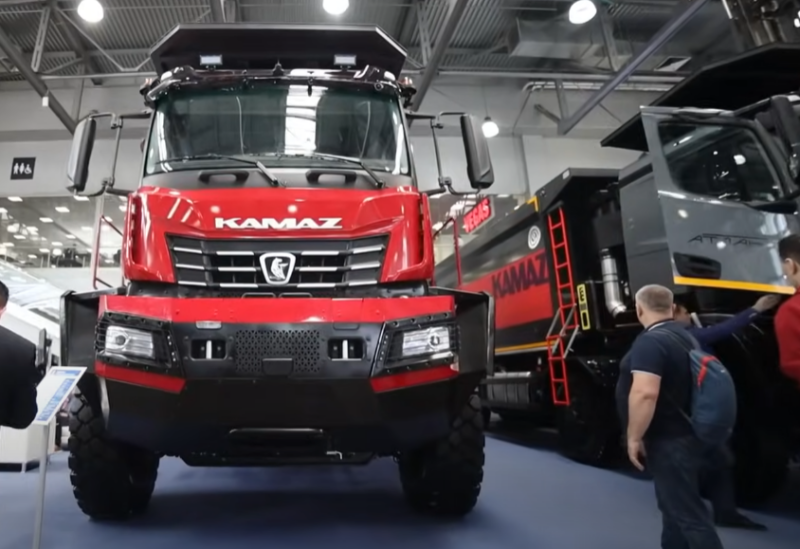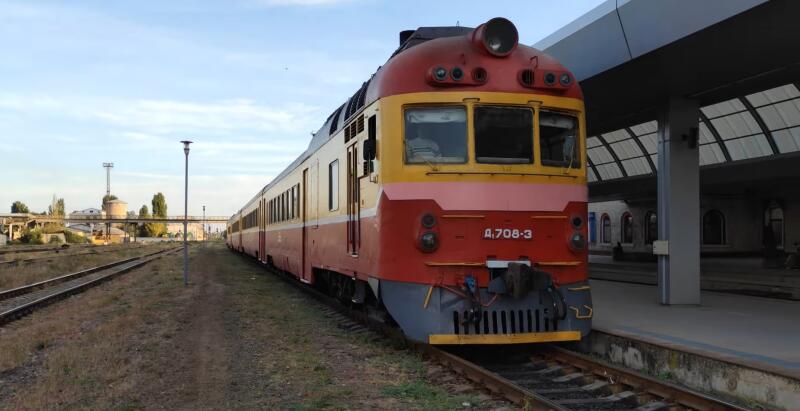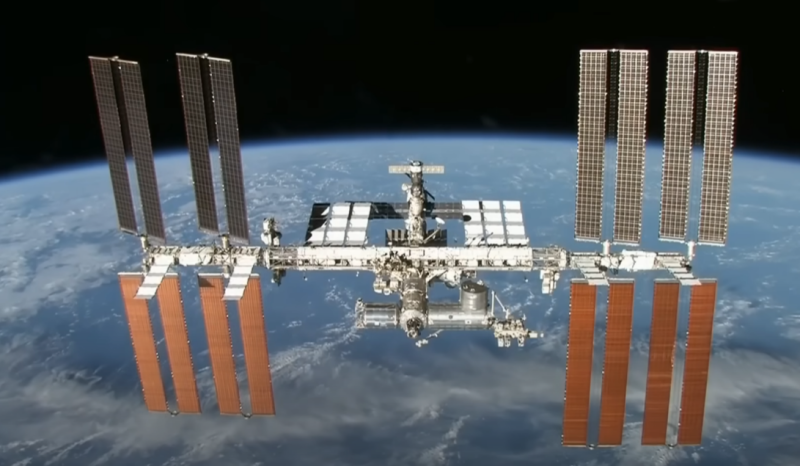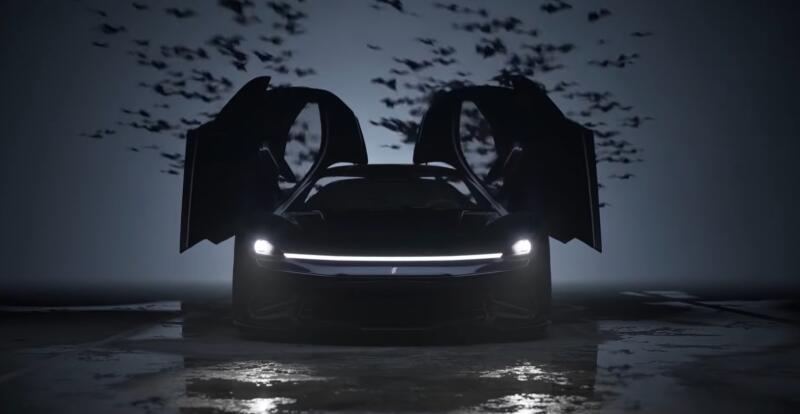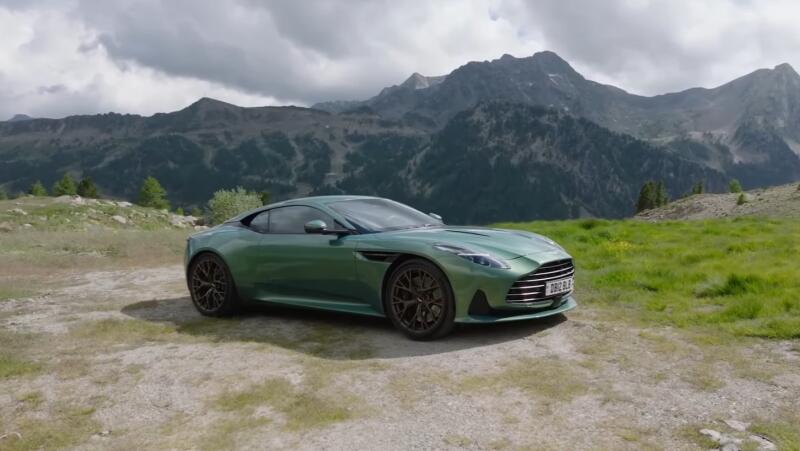One day while testing a Formula 1 car, de Cortanze discussed his ideas with ELF's marketing director, François Guiter. Interested in the ideas of a compatriot, Francois allocated a budget for the construction of a prototype. The goal of the de Cortanze project was to lower the center of gravity, to develop a suspension that prevents dives during braking and acceleration. And also to reduce the weight and make the engine a power element of the chassis, as in Formula 1. Other key features were perfect 50/50 weight distribution, improved aerodynamics and the ability to quickly change wheels at pit stops.
 ELF-X. Photo: Youtube.com
ELF-X. Photo: Youtube.comAndre replaced the front fork with a suspension on two parallel arms, and a single-sided swingarm with a cantilever wheel mount was installed at the rear. But the most interesting thing is that the motorcycle really did not have a frame. The main bearing element was now the engine. The layout also turned out to be revolutionary: for example, the fuel tank was placed not in the usual place, but under the engine! This was done in order to lower the bike's weight as well as the center of gravity. Since there was no room left for the exhaust pipes, they were placed on top, where the gas tank is located on “normal” motorcycles.
Testing on the Nogaro track began in 1978, as a pilot, de Cortanze invited the Frenchman Michel Rougerie, vice world champion in the 250 cm class3. The concept of the motorcycle proved to be difficult to pilot, the bike was difficult to turn into turns, but had excellent directional stability, including braking. Moreover, on the ELF-X, riders could slow down even in corners. The motorcycle had a wide range of suspension settings. In addition to the usual rigidity, it was possible to instantly change the angle of the chassis, wheelbase, ride height front and rear, as well as weight distribution!
 Andre de Cortanze. Photo: Youtube.com
Andre de Cortanze. Photo: Youtube.comBut the Yamaha two-stroke engine was completely unsuitable for use as a power element of the chassis. And Andre de Cortanza himself could not work on the project full time. The prospects for the project looked bleak…
However, there was one manufacturer who was interested in the revolutionary project of the French engineer. It turned out to be Honda. The ELF-X, equipped with a Yamaha TZ750 engine, was exhibited as a "concept" at the 1978 Paris Motor Show and literally stunned the 78-year-old Soichiro Honda who saw it!
In 1979, the Japanese conducted test runs on a French motorcycle, putting their own test rider in the saddle. Obviously, the revolutionary bike made an impression not only on the head of the company, but also on Honda engineers. After that, nothing could prevent the beginning of cooperation. As a result of this arrangement, Honda provided de Cortanza with a 1000 cc RSC endurance racing engine in current 1980 season specification, after which André set about developing a new concept based on his experience with the Elf-X.
ELF-2
The result was the ELF-E (Endurance), which made its debut at the 1981 Bol d'Or and competed in all rounds of that year's World Endurance Championship. Poles and early lap lead were marred by retirements due to unreliability. The modified bike took third place in the final 1000cc TTl-Endurance race at Mugello in 1983 and then, with a special fairing, set six world speed records at the Italian Nardo test track in 1986.
 ELF-E. Photo: Youtube.com
ELF-E. Photo: Youtube.comIn 1983, the era of 1000cc endurance racing ended and ELF decided to move into the more prestigious world of GP prototype racing. Honda supported their decision by providing three-cylinder RS500 engines, and as early as June 1984, testing of the ELF-2 prototype began. Place in the saddle, instead of the deceased Michel Ruggeri, was taken by Christian Leliard. An interesting feature of the ELF-2 was the revolutionary steering system, consisting of two separate handlebars, adapted to move forward and backward relative to the central axis of the motorcycle. The suspension was also avant-garde, using a pair of specially made Marzocchi dampers mounted under the pullrod engine.
 Motorcycles ELF-2, with unusual steering. Photo: Youtube.com
Motorcycles ELF-2, with unusual steering. Photo: Youtube.comUnfortunately, the Black Bird, as the French press dubbed this motorcycle, did not race. The riders had a hard time getting used to the strange steering system. And given that the start in the Grand Prix races of those years was given “from the pusher”, the consequences on a crowded starting grid could be sad. In addition, short suspension arms and insufficient damping Marzocchi shocks led to incurable handling problems. As a result, the revolutionary motorcycle was brought to a working state in a year. Debuting at the French Grand Prix at Le Mans, de Cortanze's bike evolved into a much less fancy ELF-2a with traditional steering and a redesigned suspension.
It's a pity, but it was at this point that André was forced to withdraw from the ELF project, due to pressure from his new employer, Peugeot, where de Cortanze was focusing on rally car development.
ELF-3, 1986
The next prototype was the ELF-3. Following de Cortanzo's departure, François Guiter, Elf's commercial director, asked race manager Serge Rosset and engineer Dan Trem to come up with a new, less radical concept for the bike. Now the future of the project depended on the results obtained on the track.
 ELF-3 with fairings removed. Photo: Youtube.com
ELF-3 with fairings removed. Photo: Youtube.comThe motorcycle, equipped with a Honda NS500 GP engine, was supposed to be ridden by Briton Ron Hazlam, who finished fifth in the 1985 World Championship. The results appeared from the very beginning of the season, when Ron scored World Championship points at the very first stage of the 1986 season, taking place on the Spanish Jarama track. Intense pre-season testing and Hazlam's racing talent, without exaggeration, proved to be a salvation for the French team!
 ELF-3 by Ron Hazlam. Photo: Youtube.com
ELF-3 by Ron Hazlam. Photo: Youtube.comAt the end of the season, the Anglo-French team took ninth place, and even outstripped the Suzuki factory team, which performed on motorcycles of a traditional design! It became obvious that the unusual project was workable, so Elf and Honda entered into a secret agreement to transfer patents for use in the construction of production motorcycles. And already in 1987, the first serial Honda VFR 750 debuted, with a single-sided “Elf type” pendulum. Officially, this design was called "Pro-Arm".
ELF-4 and ELF-5
After encouraging results in 1986, work began on the next season and the ELF-4 motorcycle. Honda then allowed an outsider into HRC headquarters for the first time, Elf engineer Dan Trem, so he could work on the NSR 500C V4 GP engine and develop parts for the new bike. Due to development difficulties, the ELF-4 did not appear until the end of the season. Ron Hazlam rode a regular Honda NSR motorcycle painted in ELF colors for most of the season and finished fourth in the 1987 drivers' standings. When the ELF-4 nevertheless debuted, it turned out that it had serious problems with the brakes and the strength of the chassis. Initially made of carbon fiber, it proved to be insufficiently durable for racing, and for the 1988 season the bike had to be heavily modified, renaming it the ELF-5.
 ELF-5. Photo: Youtube.com
ELF-5. Photo: Youtube.comThe progressive carbon fiber chassis was replaced with a magnesium one, and Nissin front brakes solved the stopping problems. The team finished eleventh in the World Cup standings and this season has been a complete disappointment for the team. However, Hazlam gave Elf-Honda victory at the 1986 Macau Grand Prix, proving himself to be a master of street racing and showing the world the potential of the radical ELF-5 concept.
 Two legends: ELF-5 and Honda NR500, with oval pistons. Photo: Youtube.com
Two legends: ELF-5 and Honda NR500, with oval pistons. Photo: Youtube.comEither way, modern motorcycles are rooted in ELF design: look at cantilever swingarms, carbon frames, the list goes on and on... September 17, 1988 marked the end of an era. After the ELF race bike crossed the finish line for the last race of the season, a decade of exciting French experimentation has come to an end.

